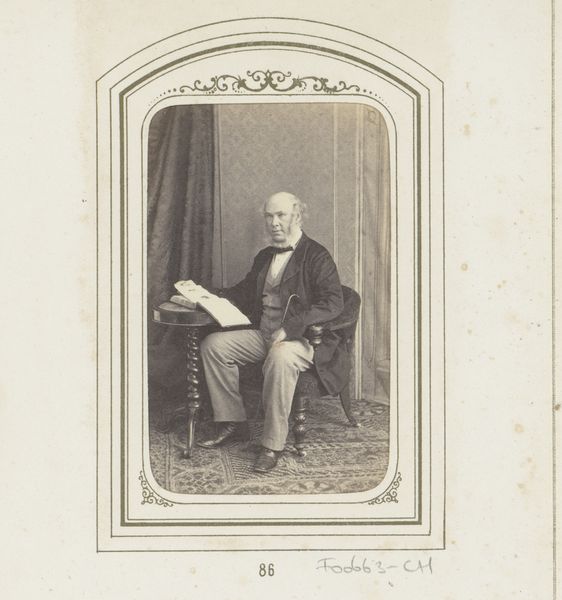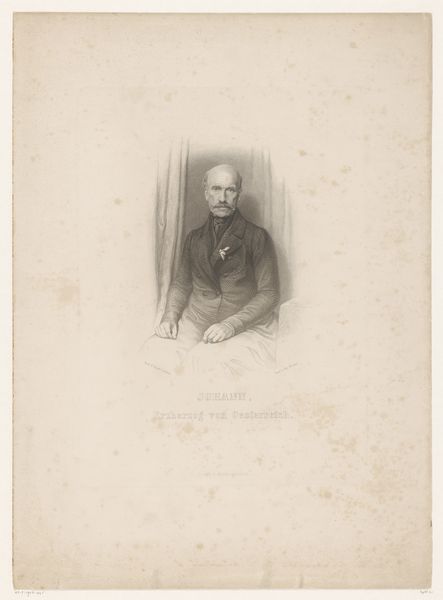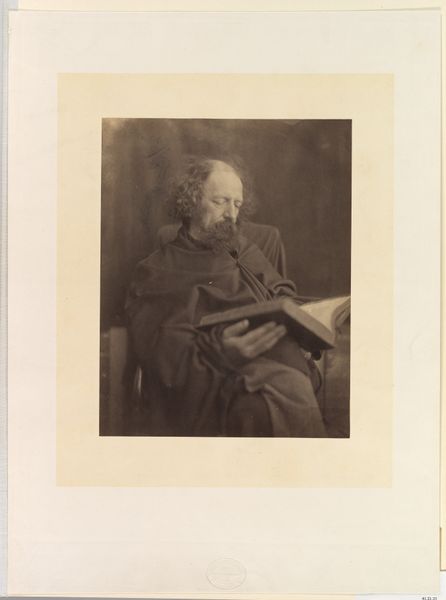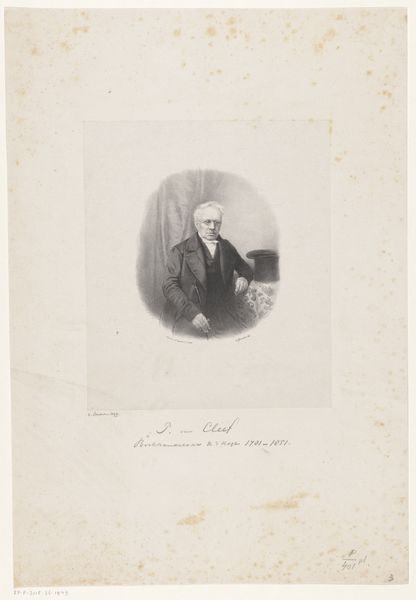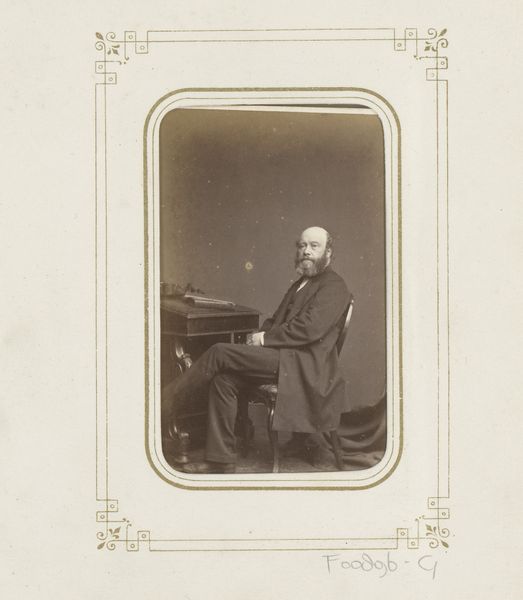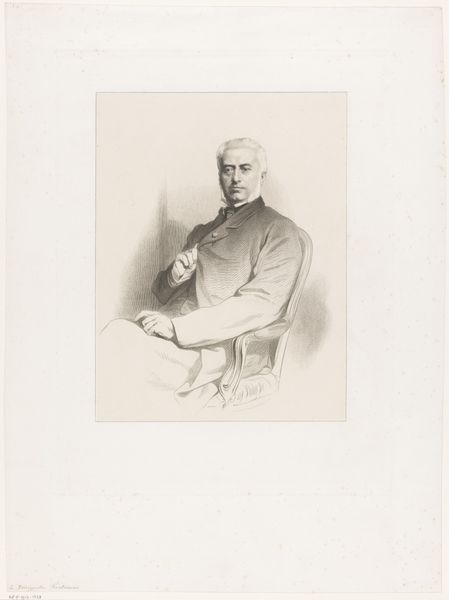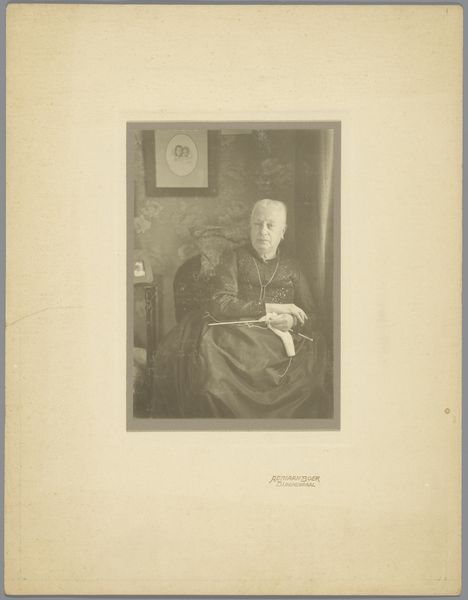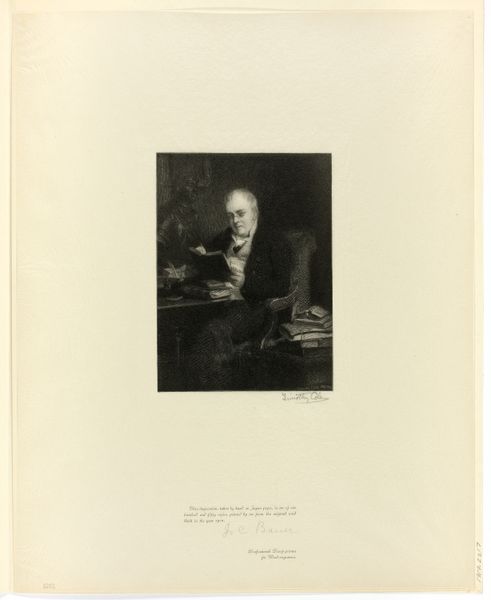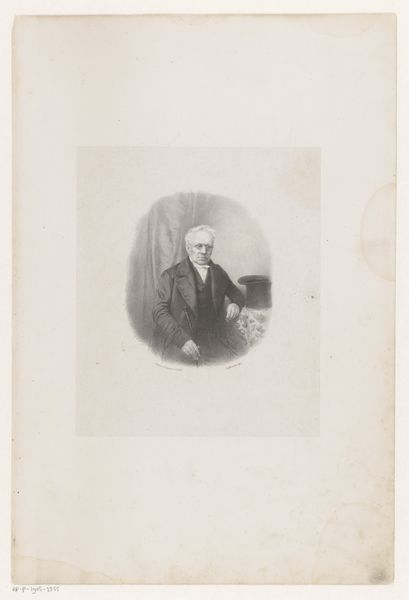
photography, gelatin-silver-print
#
portrait
#
aged paper
#
photo restoration
#
old engraving style
#
photography
#
gelatin-silver-print
#
genre-painting
#
realism
Dimensions: height 148 mm, width 100 mm
Copyright: Rijks Museum: Open Domain
Curator: This is a photograph, a gelatin silver print, depicting L.A.J.W. baron Sloet van de Beele. It's believed to have been created sometime between 1860 and 1875. Editor: My first impression is of formality and perhaps a touch of melancholy. The baron's posture and the subdued tones convey a sense of reserved dignity, almost as if he is weighed down by the responsibilities of his status. Curator: Indeed. This image exists within a very specific context of 19th-century portraiture, which served as a form of documentation, social positioning, and legacy building, particularly among the aristocracy. Photography offered a new way to visualize and disseminate power. Editor: I'm struck by the accoutrements of wealth and intellectual pursuit surrounding him. The elaborate desk, presumably where he conducted business or scholarly work, speaks to privilege, while the visible books signify knowledge and authority. However, the gaze averted from the viewer complicates that simple reading of power, I think. Curator: That averted gaze is interesting. Consider the history of the photographic portrait, often used to solidify social standing and project an image of control. Here, there’s an element of introspection, or even vulnerability, disrupting the otherwise carefully constructed scene. We must acknowledge the photographic apparatus, it creates new conventions. Editor: Absolutely, and what narrative is it producing? What power dynamics are at play between the photographer, the sitter, and the potential audience? Is there also some level of subtle subversion within those dynamics as the person evades a direct engagement with our view. I read this as a statement of social distance, or perhaps as some veiled protest or statement against colonial power structures within the setting of Dutch high society. Curator: Certainly, these photographs need to be approached critically, always aware of the embedded socio-political elements. When they reach institutions like our museum, that in turn shapes their reading. We play a role in determining who and what deserves attention. Editor: It’s vital we continue to expand the perspectives and look at these materials with new, inclusive ways. It enables conversations that allow these historical representations to have ongoing relevancy.
Comments
No comments
Be the first to comment and join the conversation on the ultimate creative platform.
